
Squid Labeled Diagram
Squid Anatomy Coloring Page. PDF for Printing Out. Click Here. Link to More Info About this Animal (with Labeled Body Diagram) Click Here. Learn to Draw this Animal. Click Here. Citing Research References. When you research information you must cite the reference. Citing for websites is different from citing from books, magazines and periodicals.
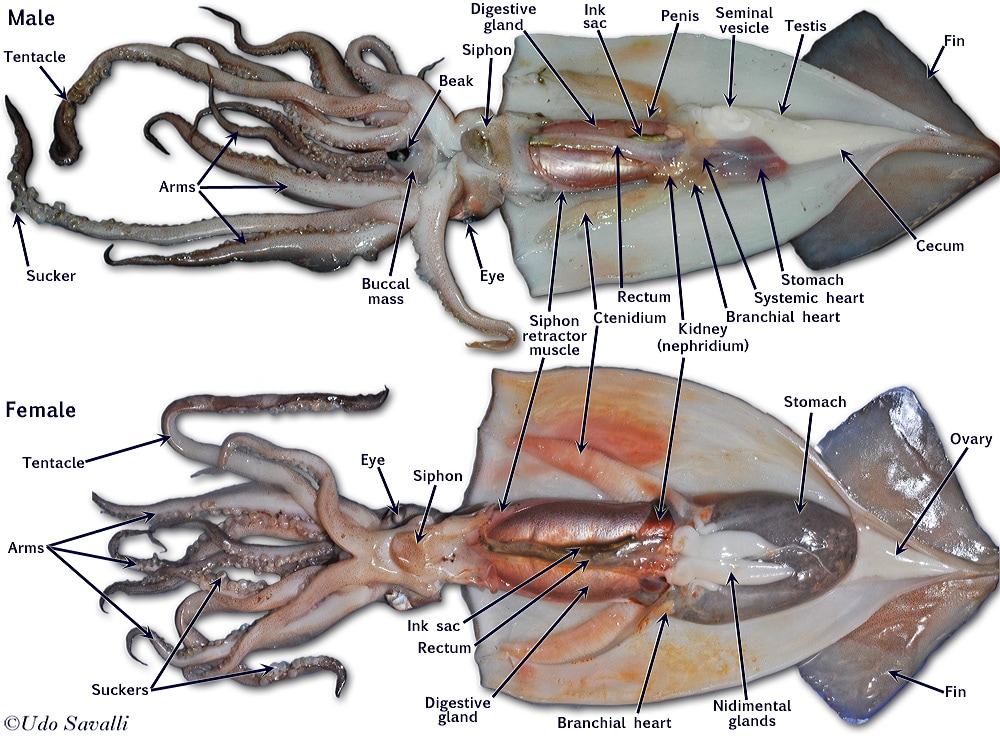
Squid Dissection Sights + Sounds
Anatomy of a Squid Diagram Labeling - 4th, 5th, 6th, 7th. Home. Anatomy of a Squid Diagram Labeling - 4th, 5th, 6th, 7th. By : admin November 4, 2023 November 10, 2023 $ 1.50. This is a worksheet designed to aid students in understanding the anatomy of squid. It should be used for 3rd grade and up. It can be used at home for a homeschooler.

Squid Dissection Carolina Biological Supply
Anatomy of the Squid Diagram by ZOWOLOGY | TPT This hand-drawn, clean design makes distinguishing the anatomical features of the squid easier for students. I developed this diagram for use with my students during our study of the squid within the phylum Mollusca.Use the labeled version during instruction and provide students with a copy of the u.

Printable Squid Diagrams Dissection 101 Diagrams
Discover the anatomy of squid with diagrams and explanations. Updated: 11/21/2023 Table of Contents Squid Overview Squid Classification Squid Characteristics Squid Anatomy Lesson.
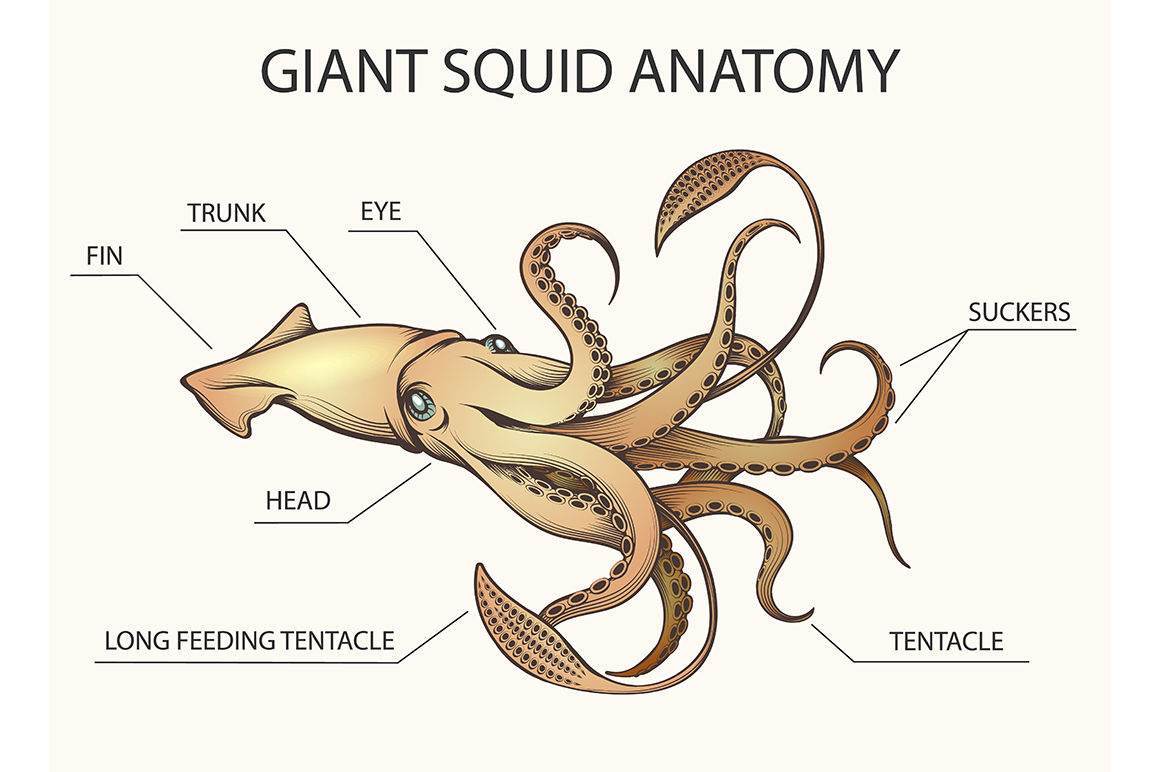
Giant Squid Anatomy Illustration By Olena1983 TheHungryJPEG
Diagram of basic squid features. Squid are cephalopods of the two orders Myopsida and Oegopsida. The two current orders comprise around 304 species. Like all other cephalopods, squid have a distinct head, bilateral symmetry, a mantle, and arms. Squid, like cuttlefish, have eight arms arranged in pairs and two, usually longer, tentacles.

Scarface CDetty Official Music Video NEW 2020 Octopus anatomy
OVERVIEW The students will be dissecting a squid to study this amazing animals adaptation so they can have a better understanding of living creatures. OBJECTIVES Following completion of this lesson, the students will be able to: Gain an understanding of mollusk anatomy and adaptations.
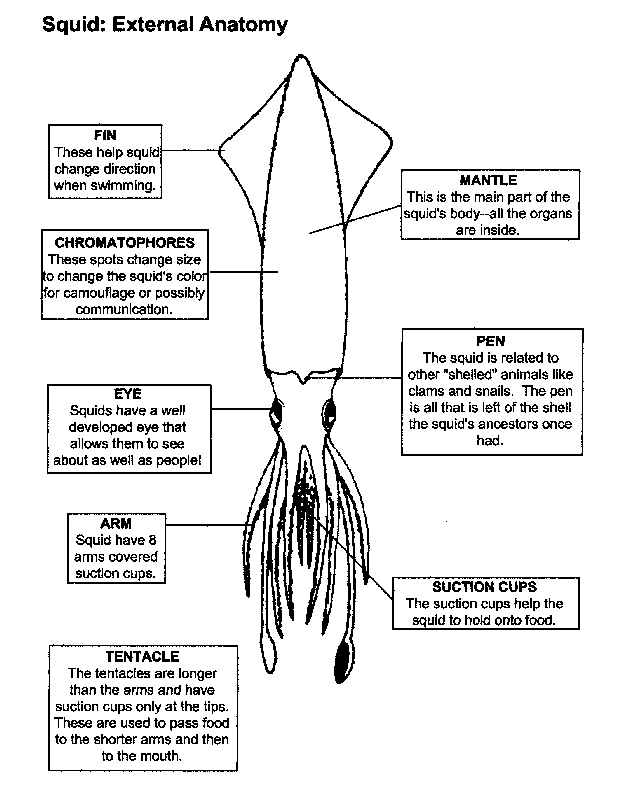
Mr. Jenkins' Summer 2012 Marine Biology Punahou School Squid
Tweezers Cutting tool (we use a razor blade here) Magnifying glass (optional) Dissection tray (we use a lunch tray here) A Note on Dissection Dissecting animal organisms is a tricky subject which ultimately some will object to and that's okay.

squid internal anatomy labelled Dissection
Home Ocean Life Invertebrates Giant Squid Anatomy photo Giant Squid Anatomy (Smithsonian Institution) Like octopods and cuttlefishes, giant squid have eight arms. But they use their two much longer feeding tentacles to seize prey. The tentacles have powerful suckers at the ends.

Pin on EFL FOOD CULINARY VOCABULARY
diagram of squid; wash bottle; microscope (optional). Spread out the arms, tentacles, and fins. Draw and label the external parts of the squid: arms, tentacles (have suckers only at the tips), head, eyes, fins, mantle, funnel, tail, suckers, beaks (where each would be found on an intact squid) and mouth. If something cannot be seen, draw an.
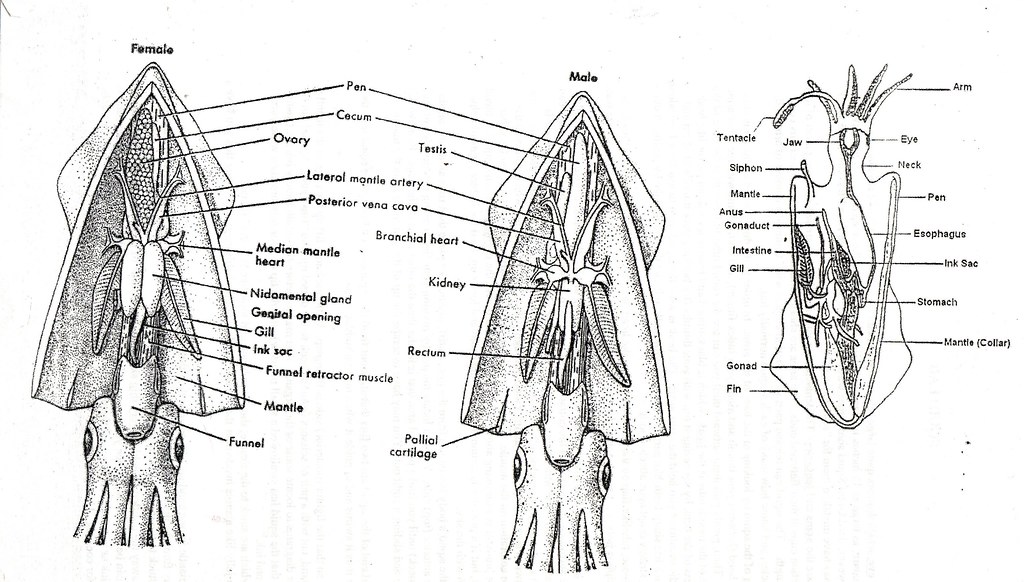
Biology 11 Squid Dissection Mrs Dildy
Step 1: Examine the External Anatomy of the Squid Squids are shipped in bags and are stored in a preservative, when you first open the bag, you might notice a pungent aroma. Rinse the squid off and lay it in a dissecting pan. Determine the dorsal (back) side of the squid by looking for a darker coloration and the presence of fins.
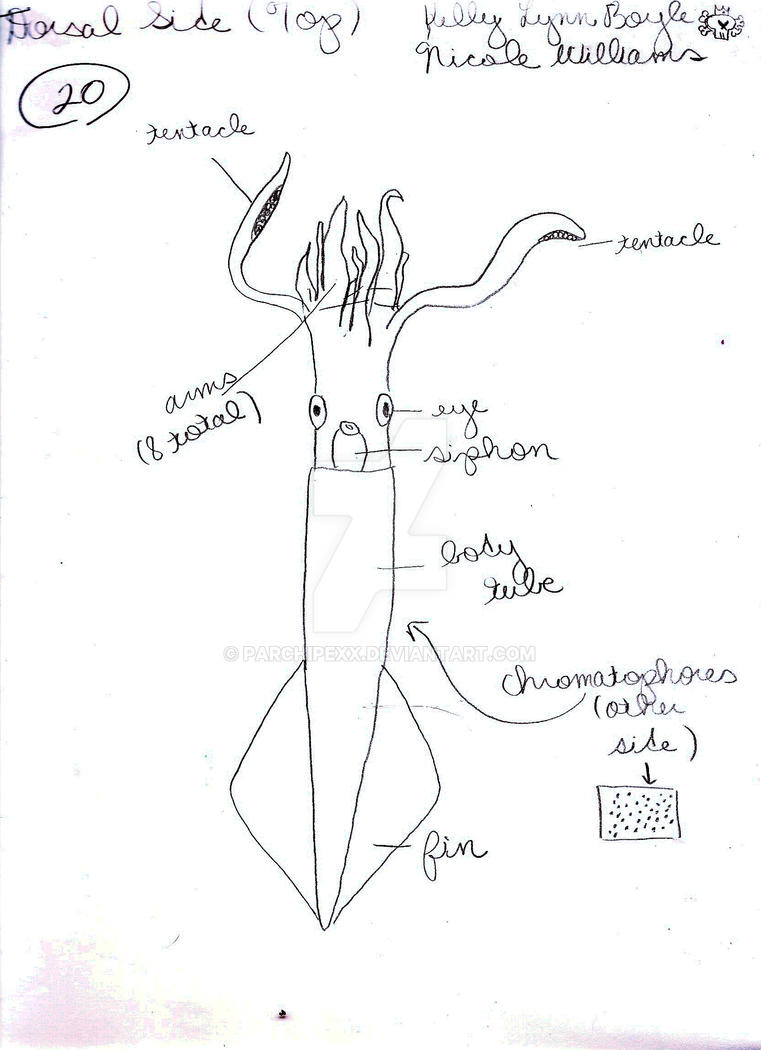
Squid Diagram by Parchipexx on DeviantArt
External Basics Externally, the squid's body can be divided into a head and a body or trunk. The head is connected to the body by a short thin neck. The body itself is dorsoventrally flattened and roughly spherical or oval-shaped depending on species. The tail end of the trunk is extended to a point and the anterior end is truncated.

Squid (Giant)
Squid have been featured in sailing myths and legends for more than 300 years. They're swift, agile and surprisingly intelligent creatures with brains larger in proportion to their bodies than most fish and reptiles have. Learn about all squid, squid anatomy and how big squid can can actually get.

squid diagram by mrdynamite on DeviantArt
The first thing you will notice is that they are symmetric along the length of their bodies. This allows them to easily move along in the water. The head of a squid is different than anything else you have seen that lives in the water. It is much larger than the body. It is flat but it has a large volume to it.
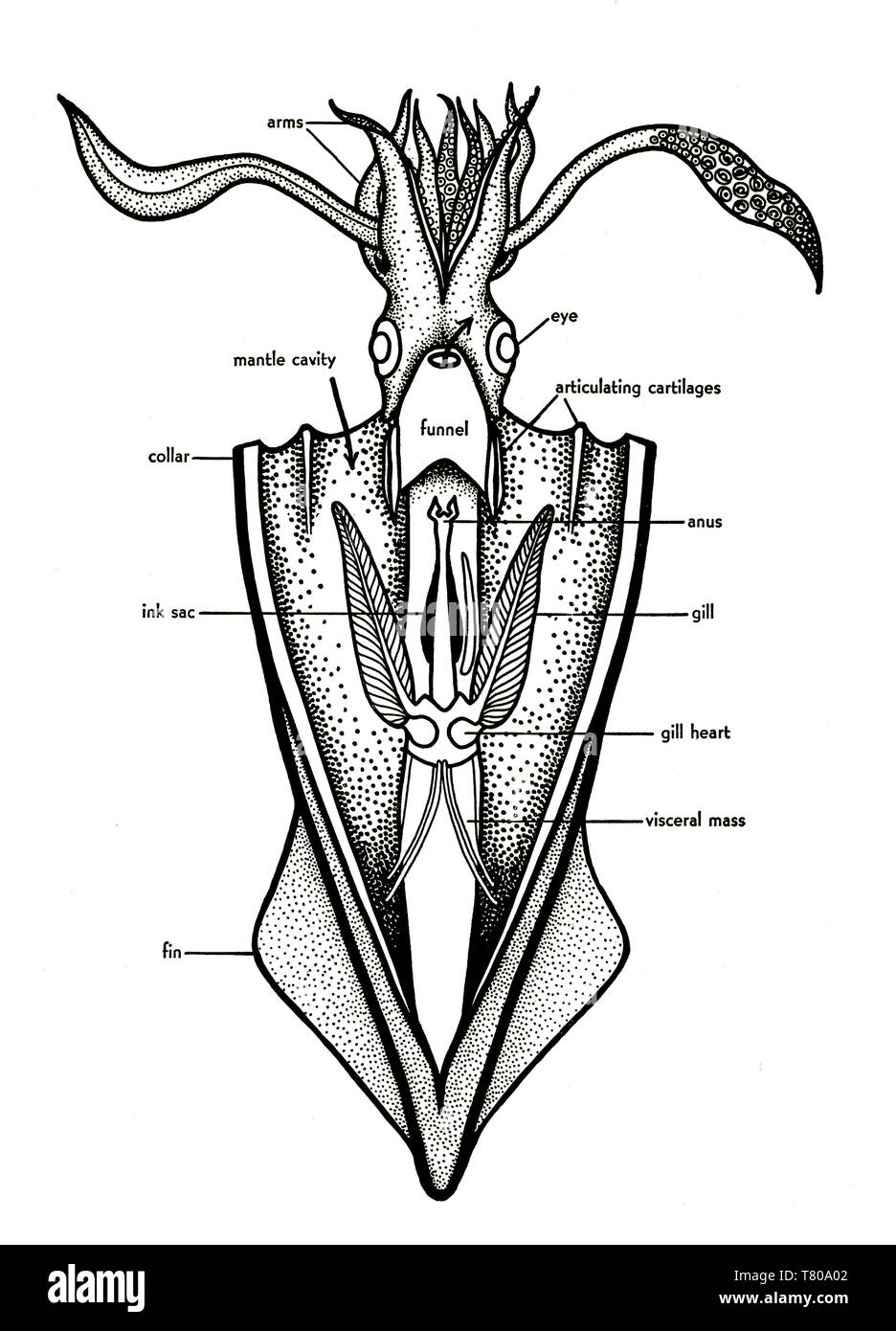
Diagram of Basic Squid Features Stock Photo Alamy
Ecology Background: Squid are amazing! Here are some of the fascinating facts we learn: They are the second most plentiful animal (after fish) in the ocean. They are cephalopods, which is Greek for head foot. They have a mantle with two fins, eight arms, and two tentacles (used for grabbing prey).

Squid External Anatomy Unlabelled Apologia Oceans Pinterest Anatomy
In this article we will discuss about the structure of Squid (Loligo) with the help of a diagram. 1. It is a marine mollusc commonly called squid. 2. Body is long, slender, pigmented and tapering behind. ADVERTISEMENTS: 3. A fin is present along its postero-lateral edges. 4. The shell is internal, feather-like and membranous. 5.
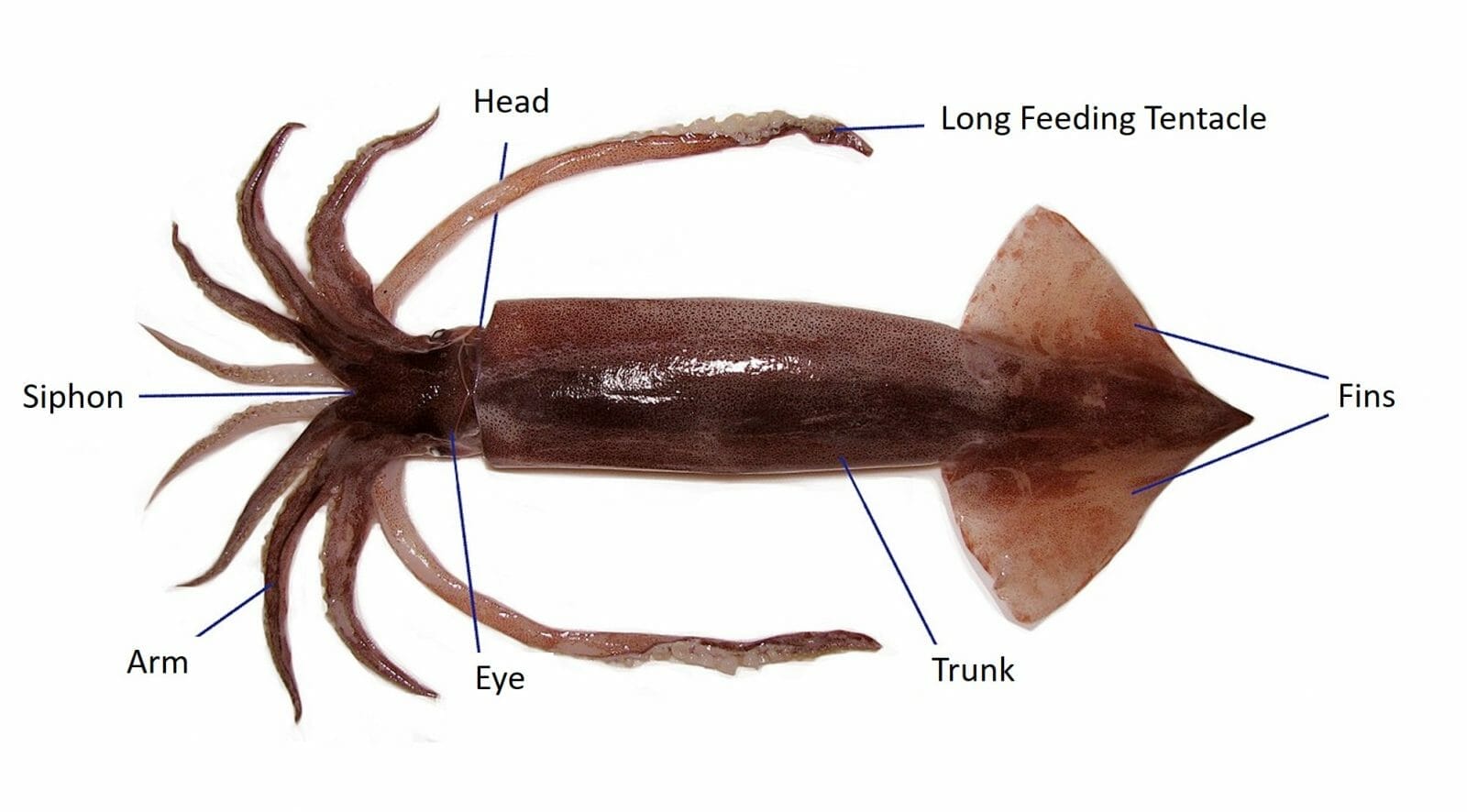
Squid Anatomy
Squid are soft-bodied molluscs whose anatomy evolved to adjust and conform to an active predatory way of life. The head and foot of the squid are at one end of a slender body, and this endpoint is functionally anterior, guiding the shrimp as it travels through the water. A set of eight arms and two unique tentacles enclose the mouth; each.